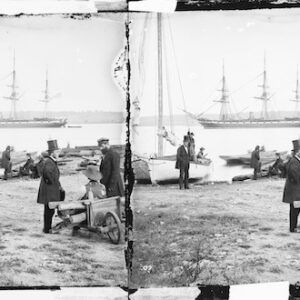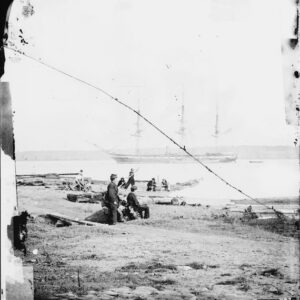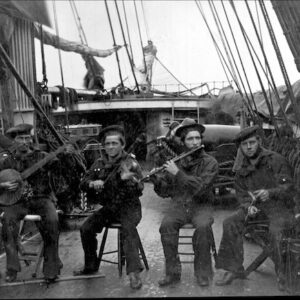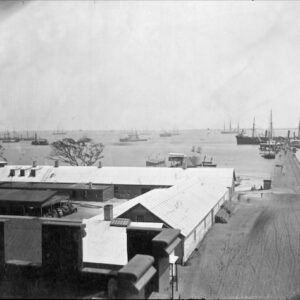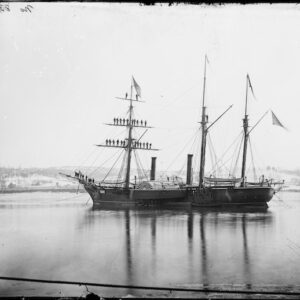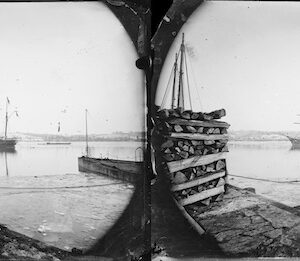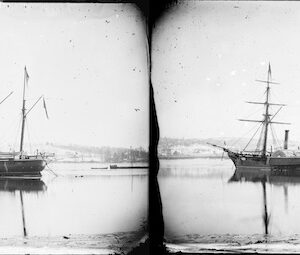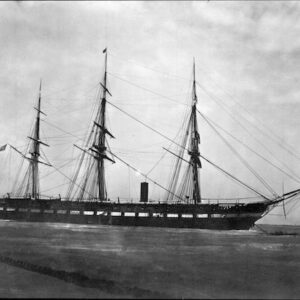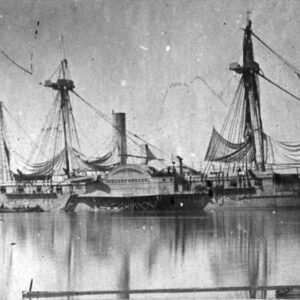Tag: steam frigate
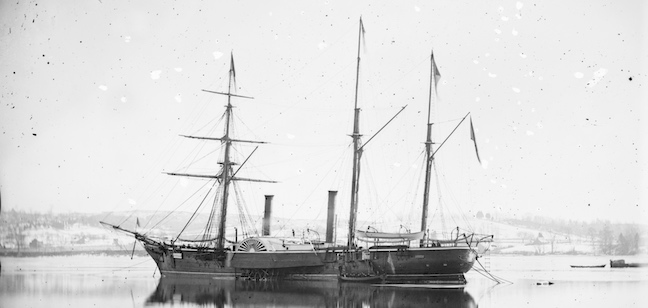 Wikipedia says: Steam frigates, also known as screw frigates, the larger screw ship of the lines (Example- French ship Napoléon (1850)) and the smaller steam corvettes, steam sloops, steam gunboats and steam schooners, were steam-powered warships that were not meant to stand in the line of battle. The first such ships were paddle steamers. Later on the invention of screw propulsion enabled construction of steam-powered versions of the traditional frigates, corvettes, and sloops.
Wikipedia says: Steam frigates, also known as screw frigates, the larger screw ship of the lines (Example- French ship Napoléon (1850)) and the smaller steam corvettes, steam sloops, steam gunboats and steam schooners, were steam-powered warships that were not meant to stand in the line of battle. The first such ships were paddle steamers. Later on the invention of screw propulsion enabled construction of steam-powered versions of the traditional frigates, corvettes, and sloops.
The frigate and corvette were ‘ships’. For a vessel to be called a ‘ship’ it had to have full rigging, i.e. square rigs on three masts. If it had only fore-and-aft rig on the mizzen mast, it was not a ship. Ships were classified as: ships of the line, frigates and corvettes.
The upper limit for a ship to be still considered a frigate was that it had only one covered gun deck. If a ship had two covered gun decks, it was no longer a frigate, but a ship of the line. A confusing circumstance arose when in the early nineteenth century the forecastle and quarterdecks of most big ships were joined to become a complete flush deck above. These ships continued to be frigates, e.g HMS Constance (1846).
The lower limit for a ship to still be considered a frigate was that its gun deck was covered. If a ship had only a single open gun deck it was considered to be ‘corvette build’. If a ship had a single covered gun deck, it was at least a frigate.
In general a frigate was commanded by a captain and a corvette by a lieutenant.
Paddle frigates
This first generation of steam warships were “paddle warships” (in the categories of frigate, sloop, gunvessel or other). They used paddlewheels mounted on either side or in the center. Paddle steamers were severely limited in the armaments they could mount. Paddle wheel propulsion also had very serious effects on sailing quality. The placement of the machinery and wheels in the middle of the ship conflicted with having the main mast there, and so the sail plan of paddle frigates was less than ideal. Another characteristic that slowed down these vessels was that the paddle wheels would rotate in the water freely when the ship was sailing.
The armament of paddle frigates compared badly with their sail-only counterparts. Paddle frigates could not have a traditional full broadside because of the space taken by the machinery and the paddle wheels. The weight of the machinery and coal these ships carried was a perhaps even more serious problem. It meant that the designers had to limit the weight of all other ‘cargo’, including artillery. Therefore the armament of steam vessels had to follow a different concept: Because of their ability to move against the wind they could be assumed to be able to choose their distance to sail-only ships. Under these circumstances the very heavy guns that were deemed to fire too slowly for close-quarters combat did become useful because they had a high effective range. Meanwhile, the development of heavy shell guns like the ML 8-inch shell gun provided a long range weapon that could sink a ship with a single hit. The only means to counter it was to develop heavier solid shot cannon that had an even higher effective range. All this generally led to equipping early steamers with only a few very heavy guns, both shell guns and solid shot guns. These were often mounted on pivots and slides.
Paddle frigates were used extensively during the Opium Wars, Mexican–American War, Crimean War and American Civil War. An unintended quality was that the lack of broadside batteries gave them very spacious decks. Combined with being immune to contrary winds, this made them ideal for large scale troop transport. By 1870 most had been scrapped or sold into civilian service.
The first steam frigates of the United States were the USS Mississippi and Missouri. These were two very big steam paddle frigates commissioned in 1841 and 1842. They each displaced 3,220t and had 10 big Paixhans guns. By 1850 the U.S. paddle steamers were divided in classes. The Mississippi was designated a steam frigate, and so where the Susquehanna and Powhatan, each with 9 heavy guns, and the San Jacinto and Saranac each with 6 heavy guns. The next class were the ‘steamers first class’, containing the Fulton, Michigan and Alleghany. Seven other steamers were ‘less than first class’
Showing all 10 results

